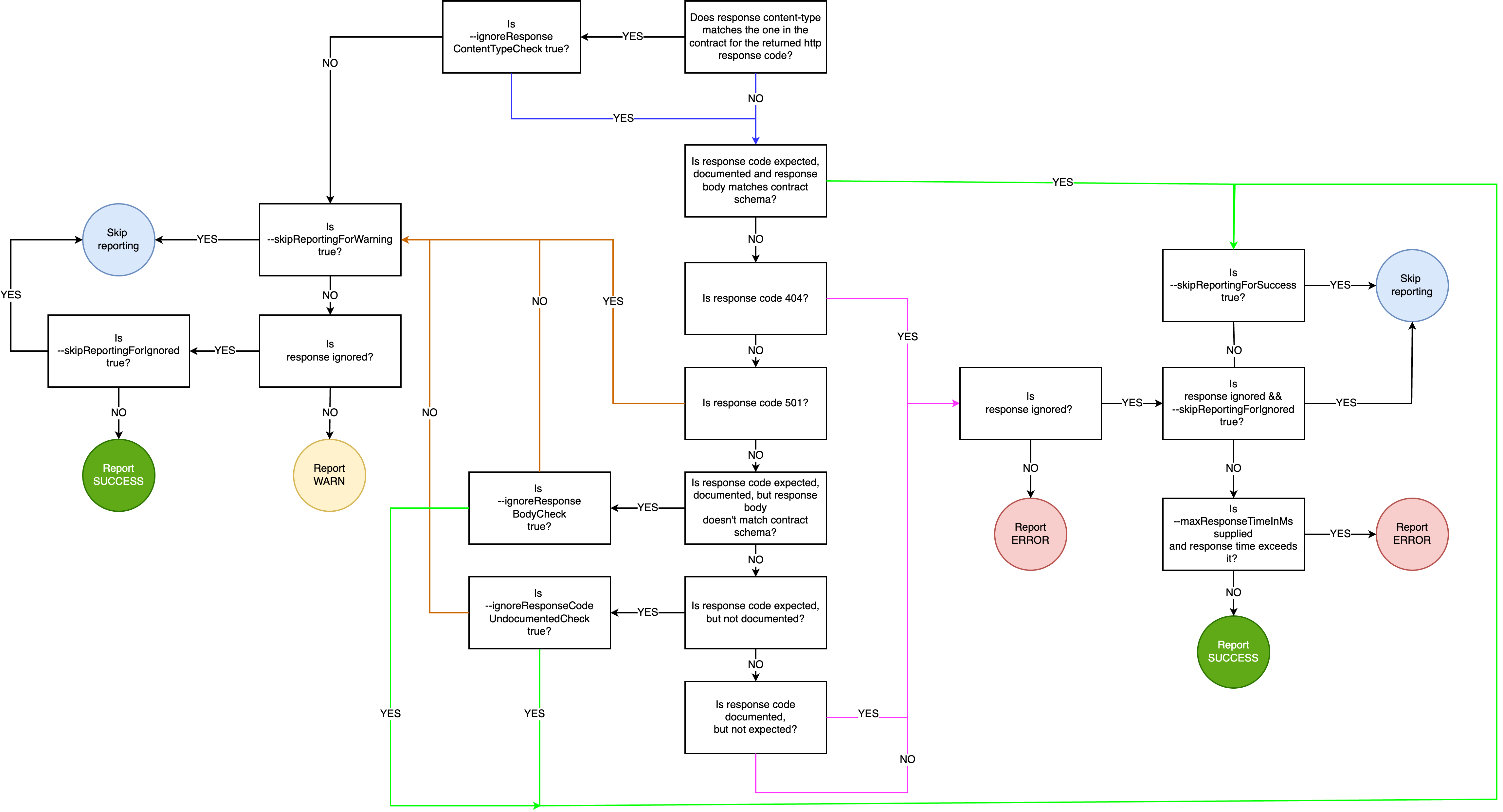How CATS Works
CATS generates tests based on configured Fuzzers. Each Fuzzer tests a specific scenario and has a specific expected result. The CATS engine will run the scenario, get the result from the service and match it with the Fuzzer expectations.
Depending on the matching outcome, CATS will report as follows:
info/successis expected and documented behaviour. No need to be actioned.warnis expected but undocumented behaviour or some misalignment between the contract and the service. This will ideally be actioned.erroris abnormal/unexpected behaviour. This must be actioned.
What data goes into the report is also influenced by the arguments supplied, particularly --ignoreXXX arguments.
The below diagram shows all decision points that are considered when reporting a test case:

CATS will iterate through all endpoints, all HTTP methods and all the associated requests bodies and parameters (including multiple combinations when dealing with oneOf/anyOf elements)
and fuzz their values considering their defined data type and constraints.
The actual fuzzing depends on the specific Fuzzer executed. Please check the list of fuzzers for the specific behaviour.
There are also differences on how the fuzzing works depending on the HTTP method:
- for methods with request bodies like POST, PUT, PATCH the fuzzing will be applied at the request body data models level
- for methods without request bodies like GET, DELETE the fuzzing will be applied at the URL parameters level
For HTTP methods with request bodies (POST,PUT) that have also URL/path parameters, you need to supply the path parameters via --urlParams or the --refData file
as failure to do so will result in Illegal character in path at index ... errors.